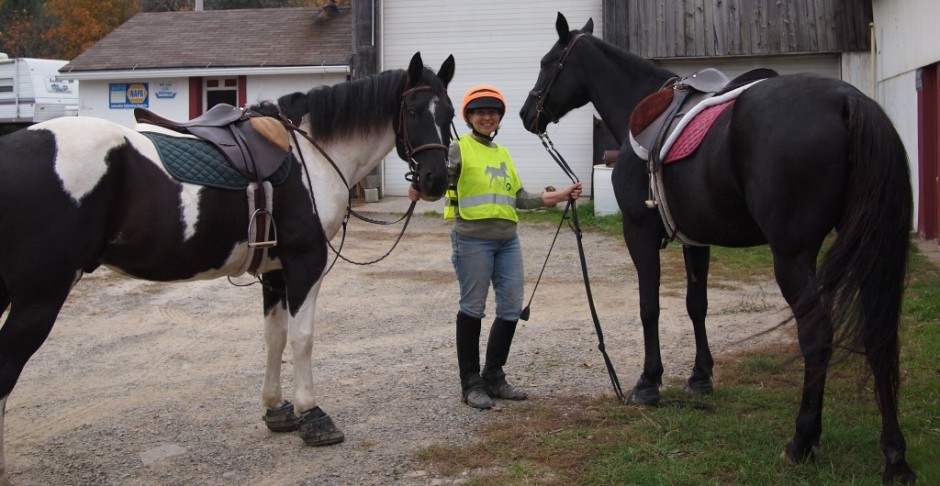Every summer beginning in June, the horses at Ballentine’s stables are kept in the barn during the heat of the day with turn out at night. Fans are set up to circulate air when temperatures get exceedingly high. Riding routines change because of the heat; we ride either in the early morning or late afternoon when the heat breaks and the temperature drops. Before riding and after, I make sure the horse has plenty of water to prevent dehydration. Usually, I ride through Round Top Park where plenty of trees shade the gravel roads and trails. A gentle breeze often blows off the hillside and the cooler temperatures under the trees provide relief from the blazing sun. After the ride a bath helps the horse cool down.
Since the weather was unrelentingly hot, hosing off the horse became a standard routine. Cooling down Pepper provided me with a cool off too, as inevitably I got sprayed by the hose. The bath started with the horse’s feet and legs, and then I worked my way up the chest, down the neck and across the barrel. By starting with the lower extremities, the horse became used to cold water and enjoyed the bath. The scraper’s purpose was to rid excess water from clinging to the horse’s hair. If left on the horse, the excess water actually made the animal hotter.
Last month, Anne and I rode down to Murray Creek just below the barn and let the horses put their feet in the water. Pepper hated the water, but she still walked through the creek. A culvert cut under the roadway allowed the creek to flow under the street and created a small waterfall. Huge oak trees overhung the stream near a deep pool which provided a tranquil retreat from the sun’s rays. Unfortunately as the weeks passed, Murray Creek slowly dried up exposing a rocky streambed.
The extreme temperature made riding problematic. The Heat Index, a simple equation, helps riders determine how safe it is to ride in hot weather. The equation is: Temperature (F) + Relative Humidity = Heat Index. As a general rule of thumb, when the Heat Index is less than 130 it is safe to ride, at 150 you should ride less strenuously and over 180 you shouldn’t ride at all. On superhot days, the best time to ride is either in early morning or late afternoon when the temperature is cooler.
So far this summer the weather has been boiling hot. Sizzling heat scorched the entire US beginning in mid-June when the country experienced record-breaking temperatures. For intensity and duration, climatologist reported the summer heat wave broke most of the nation’s previous records. Although our region experienced extremely dry conditions, the Endless Mountain’s temperatures were in the 80’s and 90’s which was cooler than most of the nation. US Today reported that 64% of the country had drought conditions. The US Drought Monitor reported that 54% of the nation’s pastures were in poor condition and corn crops had dried up with 38% of the nation’s corn in poor to very poor condition. Are we headed for a new Dust Bowl? Environmentalists claim that these are all signs of global warming; others say the weather is simply the result of ordinary fluctuations in climate. Whatever the case may be, the extreme heat with little to no rain certainly has an impact on horses.
Sources:
NOAA National Climatic Data Center, State of the Climate: National Overview for June 2012, published online July 2012, retrieved on July 20, 2012 from http://www.ncdc.noaa.gov/sotc/national/2012/6.; http://animalscience.ag.utk.edu/Horse/pdf/HorseExpress/HrseExp%20V.21%20No.3.pdf; http://news.softpedia.com/news/This-Year-s-June-and-July-Bring-Us-Record-Breaking-Temperatures-280090.shtml;http://droughtmonitor.unl.edu/; http://www.usatoday.com/weather/drought/story/2012-07-19/drought-conditions/56345586/1
